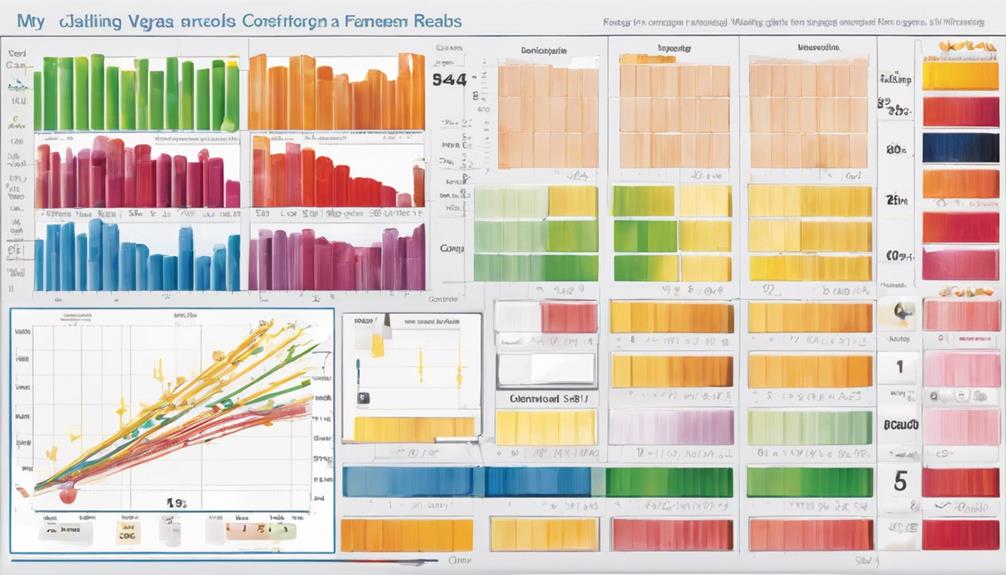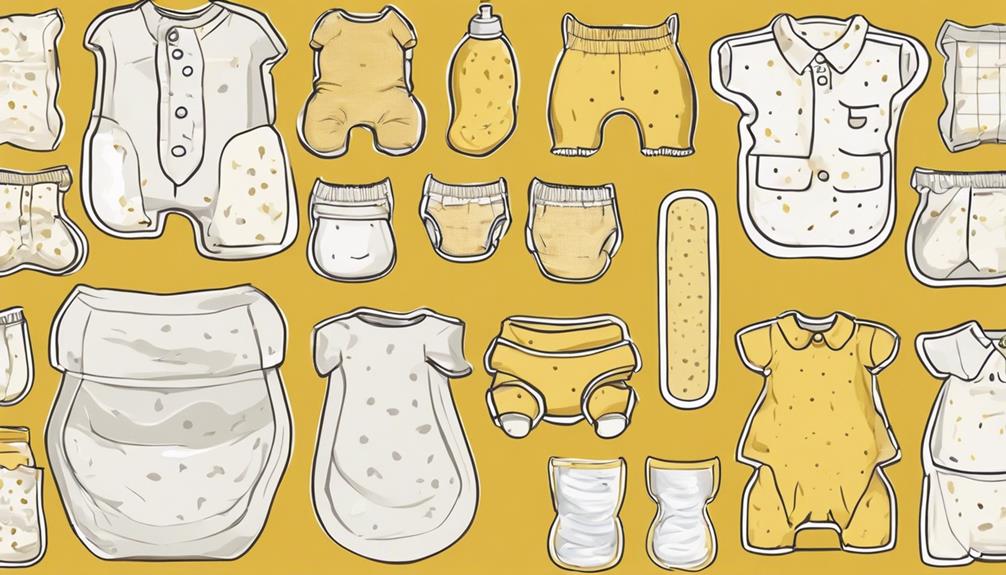When delving into the intricate world of breastfeeding, it is important to identify subtle signs that may indicate potential challenges.
A mother's instinct coupled with awareness of lip tie can greatly impact the breastfeeding journey. Consider this: what if a simple observation could hold the key to a smoother nursing experience for both you and your baby?
Let's explore the nuances of identifying lip tie and its implications on breastfeeding to pave the way for informed decisions and effective solutions.
Key Takeaways
- Lip tie affects breastfeeding by hindering latch and suction.
- Signs include visible tissue connecting upper lip to gum.
- Seek professional help for diagnosis and tailored interventions.
- Early recognition of lip tie crucial for preventing long-term issues.
Understanding Lip Tie in Babies
Understanding lip tie in babies is essential for recognizing and addressing breastfeeding challenges early on. Lip tie refers to the tight or short tissue connecting the upper lip to the gum, impacting a baby's ability to breastfeed effectively. This condition can result in difficulties with latching properly, which in turn affects milk transfer during feeding sessions.
By utilizing classification systems like Kotlow's, healthcare providers can evaluate the severity of the lip tie and its implications for feeding. Prompt diagnosis and treatment of lip tie play a critical role in enhancing feeding efficiency and averting potential long-term issues.
Recognizing the signs of lip tie in babies can lead to interventions that support a healthier breastfeeding journey for both the baby and the breastfeeding parent. By understanding the nuances of lip tie in infants, individuals can take proactive steps in ensuring the best feeding experiences for their little ones.
Signs and Symptoms of Lip Tie
Experiencing challenges with breastfeeding can be distressing, and recognizing the signs and symptoms of lip tie is important for addressing these difficulties effectively. When it comes to identifying lip tie in babies, there are several key indicators to look out for:
- Visible Band of Tissue: A clear band of tissue connecting the upper lip to the gum can be a visible sign of lip tie.
- Difficulty Maintaining Suction: Babies with lip tie may struggle to maintain a proper latch and suction while breastfeeding.
- Excessive Gas or Reflux: If your baby experiences frequent gas issues or reflux during feeding, it could be a symptom of lip tie.
Understanding these signs can help parents and caregivers seek appropriate assessment and treatment for their baby's lip tie, ultimately improving the breastfeeding experience for both the baby and the parent.
Impact on Breastfeeding
Recognizing the impact lip tie can have on breastfeeding is important for addressing the challenges faced by both babies and parents. When infants have a lip tie, they may struggle with a painful latch, leading to inadequate suction and discomfort during feeding. This can result in symptoms like gassiness, fussiness, and reflux, making nursing a challenging experience.
Additionally, lip tie can affect feeding efficiency, causing oral sensitivity and difficulties in using utensils or drinking from a cup later on. As parents, it's crucial to be aware of how lip tie can impact your child's feeding habits and overall well-being.
Nipple Pain and Low Milk Supply
Dealing with nipple pain while breastfeeding or struggling with low milk supply can be indicative of a potential lip tie concern affecting your breastfeeding journey. When faced with these challenges, it's important to contemplate how lip tie may be impacting your ability to breastfeed successfully. Here are some key points to keep in mind:
- Lip Tie and Nipple Pain: Lip tie can lead to difficulties in achieving a proper latch, resulting in nipple pain during breastfeeding.
- Milk Supply Concerns: Inefficient milk transfer caused by lip tie can contribute to low milk supply, affecting your baby's nutrition.
- Diagnosis and Support: Seeking help from a lactation consultant can aid in diagnosing lip tie issues, improving milk removal, and addressing discomfort.
Understanding the role of lip tie in nipple pain and low milk supply is vital for enhancing your breastfeeding experience. By recognizing these challenges and seeking appropriate assistance, you can work towards resolving these issues and nurturing a successful breastfeeding relationship with your baby.
Seeking Professional Help
If you're facing challenges with nipple pain or low milk supply while breastfeeding, seeking professional help from a lactation consultant or pediatric dentist is important for diagnosing and addressing potential lip tie issues.
Healthcare professionals experienced in identifying and treating tongue and lip tie problems can provide accurate assessments of the severity of the issue and its impact on breastfeeding.
Early intervention by these specialists is vital as it can prevent long-term difficulties associated with lip tie, ensuring successful nursing experiences.
By consulting with experts in the field, you can receive tailored interventions that are specific to your situation, offering effective solutions to any breastfeeding problems you may be encountering.
Frequently Asked Questions
How Do I Know if My Lip Tie Is Affecting My Breastfeeding?
We can understand the concern. Signs like poor latch, clicking sounds, or baby discomfort while nursing might indicate a lip tie affecting breastfeeding. Seek support from a lactation consultant for evaluation and guidance. You're not alone.
What Does a Latch Look Like With a Lip Tie?
Lip tie latch may seem like a gentle kiss, but it's a breastfeeding foe. Upper lip tucks in, leading to weak suction, constant slipping, and milk struggles. Watch for lip curling, clicking, and low supply clues.
Can Lip Tie Causing Feeding Issues?
Lip tie can indeed cause feeding issues, impacting breastfeeding success. It manifests in symptoms like clicking while nursing and reflux in babies. Identifying and addressing lip tie early can help alleviate these challenges and support better feeding experiences.
How Do You Assess for Lip Ties?
When checking for lip ties, we gently examine the upper lip-gum connection. Signs like restricted movement or gaps between teeth may indicate a tie. Consulting a healthcare provider early can confirm and help resolve issues.
Conclusion
As we journey through the challenges of identifying lip tie and its impact on breastfeeding, remember that seeking help is like finding a guiding light in the darkness.
With professional intervention and support, we can navigate through the rough waters of pain and frustration, towards smoother sailing and a brighter breastfeeding experience.
Let's embrace the journey ahead with hope and determination, knowing that we aren't alone in this journey.










